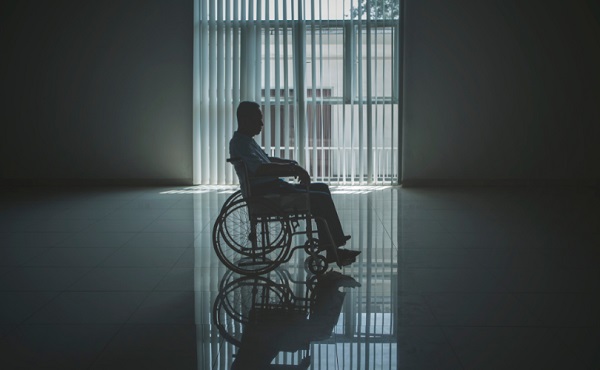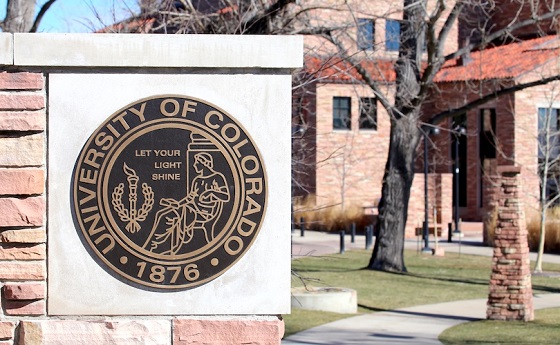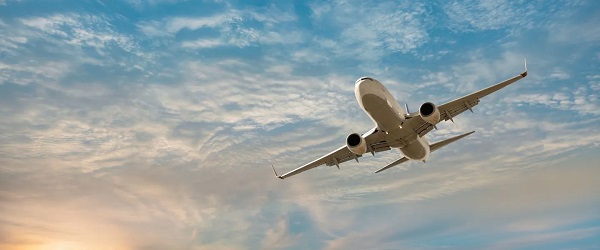Alberta
My European Favourites – Helsinki, Finland
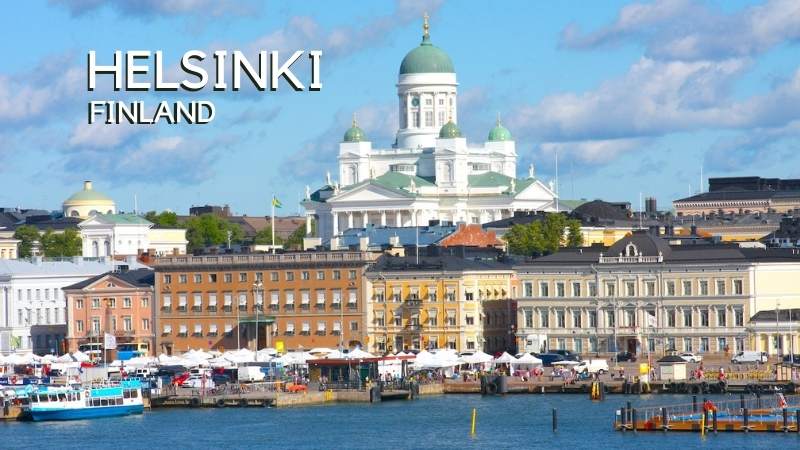
 Founded only in the 16th century, Helsinki is the geographic, political, financial and cultural capital of Finland. In addition to the area Helsinki encompasses on the mainland, it includes over 300 islands on the inlets and bays of the easternmost arm of the Baltic Sea, the Gulf of Finland. Combined with Stockholm and Tallinn, Helsinki is one of our top tour destinations for youth hockey and ringette teams for over twenty years. Finns are avid sports people and great hosts for our Canadian groups.
Founded only in the 16th century, Helsinki is the geographic, political, financial and cultural capital of Finland. In addition to the area Helsinki encompasses on the mainland, it includes over 300 islands on the inlets and bays of the easternmost arm of the Baltic Sea, the Gulf of Finland. Combined with Stockholm and Tallinn, Helsinki is one of our top tour destinations for youth hockey and ringette teams for over twenty years. Finns are avid sports people and great hosts for our Canadian groups.

View of Helsinki harbour’s busy Market Square and the prominent Lutheran Cathedral.
Before gaining independence in 1917, Finland was ruled by the Swedes and Russians. The city was founded by Sweden’s King Gustav in 1550 to rival the Hanseatic League member city once known as Reval. Today, Reval is known as Tallinn, Estonia, and it can be reached by a two hour ferry ride.
In 1809, Russia gained control of Helsinki, and in 1812, moved Finland’s capital city from Turku to Helsinki. The decision was made because Helsinki was closer to St. Petersburg and easier to defend because of the Sveaborg sea fortress which guards the sea entrance into the city. Today the sea fortress is named Suomenlinna, and is one of the city’s most popular attractions.
The population of Helsinki proper is about 650,000, and it has a metro population of around 1.5 million including its neighboring municipalities like Vantaa and Espoo. This makes it the 3rd largest city of the Nordic countries, after only Stockholm and Copenhagen. While having all the conveniences of a modern city, Helsinki is a great destination for nature lovers. There are parks and vast areas of unspoilt nature to explore year round. In the summer months, when days are long, there are beaches, boating and watersport opportunities on the sea or at nearby lakes.
Helsinki has an interesting mix of various architectural styles including modern structures that are on the cutting edge of design. The city has a vibrant nightlife with many clubs, bars and late night eateries. The culinary scene is varied from the popular local hamburger chain, Hesburger, to Michelin-star restaurants. There is even a restaurant in the city centre decorated with rustic tables and old tractors serving traditional reindeer dishes. If you want to enjoy a beer while passing Helsinki’s main sights, you may be interested in the Sparakoff Pub Tram. The red colored tram with the destination board reading “PUB” takes about 45 minutes to make a round trip. Plenty of time to enjoy a beverage or two.

The Russian Orthodox Uspenski Cathedral, the Allas Sea Pools and the Sky Wheel Helsinki.
Katajanokka Island
Inaugurated in 1868, the Uspenski Cathedral is the center of the Eastern Orthodox faith in Finland. The cathedral was built using 700,000 red bricks that were brought in by barge from a demolished fortress in the Baltic. Entrance to the cathedral is free, and about half a million tourists visit it annually to see the elaborately decorated interior and several valuable icons. The cathedral was built upon a hillside of the Katajanokka island, which forms the eastern side of the city center and the Helsinki harbour. Overlooking the city, the cathedral is a great place to start our journey through Helsinki.
Walking down from the cathedral to the waterfront, we immediately see the 40 meter tall Sky Wheel Helsinki. The wheel offers great views of the city, the sea and the surrounding islands. The wheel has two unique gondolas. One’s interior has leather seats with a glass floor and includes a bottle of champagne for a 30 minute ride. The other is the SkySauna. Yes, we all know Finns love their saunas, so why not combine a ferris wheel ride with a sauna.
Next to the wheel, we find the Allas Sea Pool which has three pools right in the Heslinki harbour. One pool is for lap swimming, one is for families and one is a salt water pool. The fresh water pools are heated, the salt water pool is not. In addition to the pools, there are saunas and a restaurant with terraces to enjoy the views. For those looking to experience a Finnish sauna, it’s a convenient location. If you have time, I would recommend the Löyly sauna which is located near the Tallin ferry terminal. There are many places in Helsinki offering a sauna, so finding one is easy.

The Presidential Palace, Market Square and a food vendor selling a fish and vegetable lunch.
Kauppatori Market Square
Taking one of the little bridges from Katajanokka island to the market square we will pass the yellow Presidential Palace. The former Russian imperial palace, contains the Office of the President of the Republic and is used for official functions and receptions. Continuing past the palace, we arrive at the Kauppatori Market Square. The square has been a marketplace for hundreds of years and is a popular tourist attraction. The year round market’s kiosks sell fresh fish, fruit, vegetables, handcrafts, clothing and souvenirs. There are also stands that sell prepared food and beverages. A warm bowl of salmon soup with rye bread or a plate of grilled fish with vegetables make a quick, inexpensive and tasty lunch. The square faces the busy Port of Helsinki (Helsingen Satama) and from here you can take boat tours of the archipelago or to the Suomenlinna Island fortress. You can also see the huge Viking and Silja Line ferries arriving in the morning and departing in the evening for Stockholm.

Senate Square with the Helsinki Cathedral. Group photo of our 2016 World Juniors fan tour.
Senate Square
The light blue Helsinki City Hall is located right in front of the Market Square. Taking a side street along the City Hall we will arrive at the expansive Senate Square with a statue of Russian Czar Alexander II at its centre. The white neo-classical Lutheran Helsinki Cathedral, built in 1852, dominates the north side of the square and towers over the city center. The west and east sides of the square have two similarly looking yellow buildings. The eastern building houses the offices of the prime Minister of Finland and the cabinet. The one on the west side is the main building of the University. North of the University building is the National Library of Finland. The ‘Sederholm house” on the southeast corner of the square is the oldest, built in 1757. The square is used for many events including art displays, food festivals, concerts, New Year’s celebrations and the Christmas market.

Helsinki’s Old Market Hall, the Havis Amanda fountain and the Esplanadi’s pedestrian walkway.
The Old Market Hall and the Esplanadi
Walking back towards the harbour, we will go past the market square on the west side of the harbour to Helsinki’s Old Market Hall. Open in 1889, it is Finland’s oldest indoor market. In the lively market you will find merchants selling meat, fish, shellfish, cheese, fruit, vegetables, baked goods, spices, coffee, tea and even a small wine and spirits shop. The cafés and restaurants in the Old Market Hall are a great place to have a break from sightseeing or have a nice lunch.
After grabbing a coffee at the Market, we head back towards the market square and to an interesting fountain that was built in 1908. The Havis Amanda fountain has a nude female statue, often referred to as Manta, at the centre. It was created by Finnish artist Ville Vallgren at his studio in Paris, France. The fountain has four seals looking up to the sea nymph as she rises out of the water. The first of May is the start of the summer for students and in celebration they would don a white cap. Since the early days of the fountain, students have celebrated “May Day” by placing a cap on the head of Manta.
The Havis Amanda fountain sits at the foot of the National urban park called the Esplanadi. This elongated park, opened in 1818, has a wide pedestrian center with numerous benches and green space on either side. The historic Kappeli restaurant, open since 1867, and the Espa Stage, used for concerts, are at the eastern entrance to the Esplanadi. There are pieces of art throughout the Esplanadi including a statue of Finland’s national poet, Johan Ludvig Runeberg, at the very centre of the park. At the western end of the park, we find the Swedish language theatre aptly named, the Swedish Theatre. Originally built in 1860, it burned down just three years later. In 1866, it was rebuilt in neo-classical style, but in 1935 it was renovated and the richly decorated exterior was changed by the architects to a simpler “functionalist” style.
The Esplanadi has a street on either side of the park and the surrounding buildings, especially on the north side, have upscale shopping and restaurants. On the north west end of the park just across the street from the Swedish Theatre is the Stockmann Department Store. The iconic Stockmann building, the largest department store in the Nordic countries, was built in 1930 and the brand’s history dates back to 1858.

The entrance façade and clock tower of the Helsinki Train Station. The unique Kamppi Chapel.
The Central Station, Art and A Chapel of Silence
Turning right at the Mannerheimintie street, we walk about 200 meters to Kaivokatu street where we can see the train station on the right. The Helsinki Central Station is the main hub for commuter and long-distance trains for approximately 200,000 people per day. The impressive Finnish granite building was inaugurated in 1919 and has a pair of statues standing guard while holding spherical lamps on each side of the grand entrance. Along with the “stone men,” the station is known for the clock tower on its east side. The Helsinki Central Station has a city metro station, restaurants and an underground shopping centre.
Beyond the train station is a huge open space called the Rautatientori, or Railway Square. On the south side of the square is the Ateneum, the museum of Finnish and international art. The museum, in a beautiful 1887 building, has Finnish works of art from the 18th century to the 20th century and is one of the three museums that form the Finnish National Gallery. In addition to the extensive art from Finland, it has over 600 international pieces.
Going back on Kaivokatu street we cross Mannerheimintie street to Simonkatu street and walk about a block. We will see a curious looking oval cylindrical building with a wood exterior. This is the very unique Kamppi Chapel or the “Chapel of Silence.” The chapel holds up to 60 people and is intended to be a place of calm and silence in a busy urban centre. The chapel is free to visit during opening hours.

The Lutheran Temppeliaukio Church’s alter, pipe organ and the upper balcony.
Parliament and Museum District & Rock Church
After enjoying a moment of silence, we make our way back to Mannerheimintie street and continue along it until we reach Mannerheim Square and the equestrian statue of Marshall Gustaf Mannerheim. The bronze statue of the Finnish military leader and statesman was erected in 1960. The statue sits in front of the Kiasma, the museum of contemporary art, which was built in 1990. Like the Ateneum, the Kiasma is part of the Finnish National Gallery. Near the Kiasma, you will find the architecturally striking Helsinki Central Library Oodi, the Helsinki Music Centre, the National Museum of Finland and the event and congress center, Finlandia Hall. Across the street from the Mannerheim statue, we also find the Finnish Parliament building. The red granite parliament building with fourteen Corinthian columns was built in 1931.
Only a couple of minutes walk from the Mannerheim Square is the Temppeliaukion Kirkko, which is better known as the Rock Church. Designed by architect brothers Timo and Tuomo Suomalainen and opened in 1969, the Lutheran church was built into solid rock, and is filled with natural light from the large skylight that leads up to the copper dome. The acoustics in the church are exceptional and it is frequently used for concerts. The exposed rock walls of the church create an interesting backdrop for the altar and an interesting contrast with the church organ with 3001 pipes. The church welcomes over half a million visitors a year.

The Sibelius monument, our Oilers group with Jari Kurri at Hartwall Arena and the pub tram.
The Sibelius Monument and the Olympic Stadium
West of Helsinki’s city center is Seurasaarenselkä Bay. On the eastern side of the bay, you will find Sibelius Park and the Sibelius Monument. The monument, made from more than 600 hollow steel pipes, is dedicated to Finland’s greatest composer, Jean Sibelius. He is noted for having encouraged, through his works, the rise of a Finnish national identity and independence from Russia. In the center of the bay is the densely forested Seurasaari island which is home to the Seurasaari Open-Air Musuem. The museum has transplanted wooden buildings from throughout Finland.
In 1952, Helsinki was the host city for the 15th Olympiad and is the northernmost city to host the summer Olympics. The flame was lit by Finland’s greatest Olympian, runner Paavo Nurmi, who won 9 gold and 3 silver medals at the 1920, 1924 and 1928 games. The Olympic Stadium is located only two kilometers north of the city centre and was originally built for the 1940 Olympics that were cancelled due to the second World War. The stadium has undergone renovations in the early 1990s, in 2005 for the World Championships in Athletics, and another renovation phase was scheduled to be completed in 2020. Over time, the stadium has gone from being able to host 70,000 spectators to just over 40,000. The stadium today hosts mainly soccer games, athletics competitions and concerts. The stadium’s 72 meter tower is a Helsinki landmark and its height is equal to the length of Matti Järvinen’s gold medal javelin throw in the 1932 Summer Olympics. The stadium visitor center is located at the foot of the tower. While in Finland, you may want to try the alcoholic “Long Drink” that was developed to serve visitors to the 1952 Olympics. Locally the Long Drink is called a “Lonkero” and the original, a mix of gin and grapefruit soda, is made by Hartwall.
Not far from the Olympic Stadium is the Linnanmäki amusement park, which opened in 1950. The park is owned by a non-profit agency that operates the park to raise funds for Finnish child welfare programs. South of the park is Töölö Bay with a surrounding green space, walking paths and two important cultural centres, the Helsinki City Theatre and the Finnish National Opera and Ballet.
A couple of kilometers north of Linnanmäki is the 14,000 seat Hartwall Arena, which is the home of the KHL’s Jokerit hockey team. The arena was built in 1997 and is used mostly for basketball, hockey and concerts. In 2016, we had a large group of Canadian hockey fans in Helsinki for the IIHF World Junior Hockey Championships, and the Hartwall Arena was the main venue for the tournament. Finland won gold with a team loaded with future NHLers Sebastian Aho, Patrick Laine, Mikko Rantanen, Kasperi Kapanen, Olli Juolevi and tournament MVP Jesse Puljujarvi. The atmosphere in the arena was electric with thousands of patriotic Finns erupting in joy at the final whistle. If Canada can’t win, the next best thing is to get caught up in the passion of the local fans.
In the fall of 2018, we had a group of Edmonton Oilers fans in Gothenburg, Sweden for the NHL season’s opening game against the New Jersey Devils. At the end of the tour, we took the overnight ferry from Stockholm to Helsinki. During our city tour, we stopped at the Hartwall arena and we surprised the group with a meeting with Oilers legend Jari Kurri. After many photos and autographs, Kurri, who was the General Manager of local team Jokerit, graciously talked hockey and watched practice with us.

The Suomenlinna ferry leaving from Market Square, the fortress walls and the dry dock.
Suomenlinna
The Suomenlinna, or Sveaborg, is an inhabited sea fortress built on eight islands south east of the city centre at the entrance to Helsinki harbour. A UNESCO World Heritage site, it was originally founded by the Swedes in 1748, but in 1808, the fortress was overtaken by Russia. It remained in Russian control until Finnish independence in 1918. The fortress welcomes over half a million tourists and locals annually. The summer months are especially busy and Suomenlinna can be easily reached by a short ferry ride from Market Square.
There are just under 1000 permanent residents on Suomenlinna and just under 400 people who work on the island year-round. Some of the reconstruction of the fortifications and general maintenance is done by volunteer inmates, who are part of an on-site minimum-security penal labour colony. A guided visit to the fortress includes Great Castle Courtyard, Piper’s Park and the large Dry Dock. There are various museums at Suomenlinna including one detailing the life of Swedish officers in the 18th century, a toy museum, a military museum, a submarine museum and a customs museum. The main Suomenlinna Museum, located in the Suomenlinna Centre, details the history of the fortress and its restoration.

The Silja Line ferry, leaving the Helsinki harbour, and the ship’s entertainment lounge.
Ferry to Stockholm, Tallinn, Riga and St. Petersburg
Getting around the Baltic Sea is easy with the numerous daily sailings by large ferry boats that include onboard shopping, restaurants, entertainment, and cabin quarters for overnight trips.
From the Helsinki Harbour in the city center, there are two sailings per day to Stockholm, Sweden. The Tallink Silja line uses the Olympia Terminal on the west side of the harbour, while the Viking Line has their terminal on the east side of the harbour on Katajanokka island. The overnight ferries leave in the early evening, and arrive in Stockholm the next morning, about 17 hours later. Prices for a return trip are very affordable.
The newer West Harbour outside of the city center is where you can catch the numerous daily two hour ferries to Tallinn, Estonia. A day trip to Tallinn departing Helsinki in the morning and returning in the evening is common although I would recommend a stay in Tallinn if you have time. The West Harbour is also where you can take the St. Peters Ferry to St. Petersburg, Russia, and with a stay of less that 72 hours you can do it without a visa. These are the main ferry routes, but there may be ferry services to Latvia, Germany and other destinations available.
Lets Go To Helsinki
Even though Helsinki is young city by European standards, it is a great place to visit. In addition to the activities and sights I have outlined here, other parts of Finland, including Lapland, are worth exploring. I have found people in Finland to be friendly, warm, open and sincere. Finland is very safe, and the country regularly ranks high on the list of the best places to live in the world. With convenient and low cost travel by ferry to neighboring countries, it is an easy add to any itinerary of the Baltic region. I look forward to returning to Helsinki with a hockey or ringette group very soon, and in 2027, Finland is scheduled to host the World Juniors again.
Explore Europe With Us
Azorcan Global Sport, School and Sightseeing Tours have taken thousands to Europe on their custom group tours since 1994. Visit azorcan.net to see all our custom tour possibilities for your group of 26 or more. Individuals can join our “open” signature sport, sightseeing and sport fan tours including our popular Canada hockey fan tours to the World Juniors. At azorcan.net/media you can read our newsletters and listen to our podcasts.
Read more stories from Paul Almeida.
Images compliments of Paul Almeida and Azorcan Tours.
Alberta
The case for expanding Canada’s energy exports
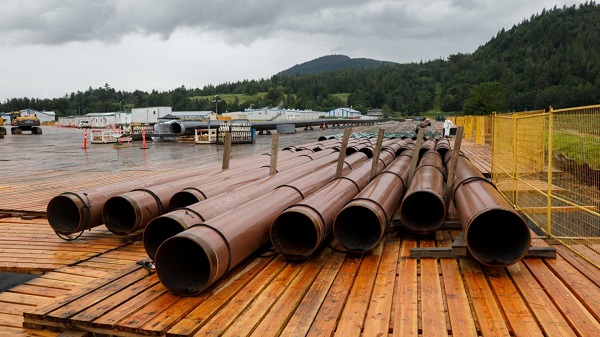
From the Canadian Energy Centre
For Canada, the path to a stronger economy — and stronger global influence — runs through energy.
That’s the view of David Detomasi, a professor at the Smith School of Business at Queen’s University.
Detomasi, author of Profits and Power: Navigating the Politics and Geopolitics of Oil, argues that there is a moral case for developing Canada’s energy, both for Canadians and the world.
CEC: What does being an energy superpower mean to you?
DD: It means Canada is strong enough to affect the system as a whole by its choices.
There is something really valuable about Canada’s — and Alberta’s — way of producing carbon energy that goes beyond just the monetary rewards.
CEC: You talk about the moral case for developing Canada’s energy. What do you mean?
DD: I think the default assumption in public rhetoric is that the environmental movement is the only voice speaking for the moral betterment of the world. That needs to be challenged.
That public rhetoric is that the act of cultivating a powerful, effective economic engine is somehow wrong or bad, and that efforts to create wealth are somehow morally tainted.
I think that’s dead wrong. Economic growth is morally good, and we should foster it.
Economic growth generates money, and you can’t do anything you want to do in social expenditures without that engine.
Economic growth is critical to doing all the other things we want to do as Canadians, like having a publicly funded health care system or providing transfer payments to less well-off provinces.
Over the last 10 years, many people in Canada came to equate moral leadership with getting off of oil and gas as quickly as possible. I think that is a mistake, and far too narrow.
Instead, I think moral leadership means you play that game, you play it well, and you do it in our interest, in the Canadian way.
We need a solid base of economic prosperity in this country first, and then we can help others.
CEC: Why is it important to expand Canada’s energy trade?
DD: Canada is, and has always been, a trading nation, because we’ve got a lot of geography and not that many people.
If we don’t trade what we have with the outside world, we aren’t going to be able to develop economically, because we don’t have the internal size and capacity.
Historically, most of that trade has been with the United States. Geography and history mean it will always be our primary trade partner.
But the United States clearly can be an unreliable partner. Free and open trade matters more to Canada than it does to the U.S. Indeed, a big chunk of the American people is skeptical of participating in a global trading system.
As the United States perhaps withdraws from the international trading and investment system, there’s room for Canada to reinforce it in places where we can use our resource advantages to build new, stronger relationships.
One of these is Europe, which still imports a lot of gas. We can also build positive relationships with the enormous emerging markets of China and India, both of whom want and will need enormous supplies of energy for many decades.
I would like to be able to offer partners the alternative option of buying Canadian energy so that they are less reliant on, say, Iranian or Russian energy.
Canada can also maybe eventually help the two billion people in the world currently without energy access.
CEC: What benefits could Canadians gain by becoming an energy superpower?
DD: The first and primary responsibility of our federal government is to look after Canada. At the end of the day, the goal is to improve Canada’s welfare and enhance its sovereignty.
More carbon energy development helps Canada. We have massive debt, an investment crisis and productivity problems that we’ve been talking about forever. Economic and job growth are weak.
Solving these will require profitable and productive industries. We don’t have so many economic strengths in this country that we can voluntarily ignore or constrain one of our biggest industries.
The economic benefits pay for things that make you stronger as a country.
They make you more resilient on the social welfare front and make increasing defence expenditures, which we sorely need, more affordable. It allows us to manage the debt that we’re running up, and supports deals for Canada’s Indigenous peoples.
CEC: Are there specific projects that you advocate for to make Canada an energy superpower?
DD: Canada’s energy needs egress, and getting it out to places other than the United States. That means more transport and port facilities to Canada’s coasts.
We also need domestic energy transport networks. People don’t know this, but a big chunk of Ontario’s oil supply runs through Michigan, posing a latent security risk to Ontario’s energy security.
We need to change the perception that pipelines are evil. There’s a spiderweb of them across the globe, and more are being built.
Building pipelines here, with Canadian technology and know-how, builds our competitiveness and enhances our sovereignty.
Economic growth enhances sovereignty and provides the resources to do other things. We should applaud and encourage it, and the carbon energy sector can lead the way.
Agriculture
Growing Alberta’s fresh food future

A new program funded by the Sustainable Canadian Agricultural Partnership will accelerate expansion in Alberta greenhouses and vertical farms.
Albertans want to keep their hard-earned money in the province and support producers by choosing locally grown, high-quality produce. The new three-year, $10-milllion Growing Greenhouses program aims to stimulate industry growth and provide fresh fruit and vegetables to Albertans throughout the year.
“Everything our ministry does is about ensuring Albertans have secure access to safe, high-quality food. We are continually working to build resilience and sustainability into our food production systems, increase opportunities for producers and processors, create jobs and feed Albertans. This new program will fund technologies that increase food production and improve energy efficiency.”
“Through this investment, we’re supporting Alberta’s growers and ensuring Canadians have access to fresh, locally-grown fruits and vegetables on grocery shelves year-round. This program strengthens local communities, drives innovation, and creates new opportunities for agricultural entrepreneurs, reinforcing Canada’s food system and economy.”
The Growing Greenhouses program supports the controlled environment agriculture sector with new construction or expansion improvements to existing greenhouses and vertical farms that produce food at a commercial scale. It also aligns with Alberta’s Buy Local initiative launched this year as consumers will be able to purchase more local produce all year-round.
The program was created in alignment with the needs identified by the greenhouse sector, with a goal to reduce seasonal import reliance entering fall, which increases fruit and vegetable prices.
“This program is a game-changer for Alberta’s greenhouse sector. By investing in expansion and innovation, we can grow more fresh produce year-round, reduce reliance on imports, and strengthen food security for Albertans. Our growers are ready to meet the demand with sustainable, locally grown vegetables and fruits, and this support ensures we can do so while creating new jobs and opportunities in communities across the province. We are very grateful to the Governments of Canada and Alberta for this investment in our sector and for working collaboratively with us.”
Sustainable Canadian Agricultural Partnership (Sustainable CAP)
Sustainable CAP is a five-year, $3.5-billion investment by federal, provincial and territorial governments to strengthen competitiveness, innovation and resiliency in Canada’s agriculture, agri-food and agri-based products sector. This includes $1 billion in federal programs and activities and $2.5 billion that is cost-shared 60 per cent federally and 40 per cent provincially/territorially for programs that are designed and delivered by provinces and territories.
Quick facts
- Alberta’s greenhouse sector ranks fourth in Canada:
- 195 greenhouses produce $145 million in produce and 60 per cent of them operate year-round.
- Greenhouse food production is growing by 6.2 per cent annually.
- Alberta imports $349 million in fresh produce annually.
- The program supports sector growth by investing in renewable and efficient energy systems, advanced lighting systems, energy-saving construction, and automation and robotics systems.
Related information
-
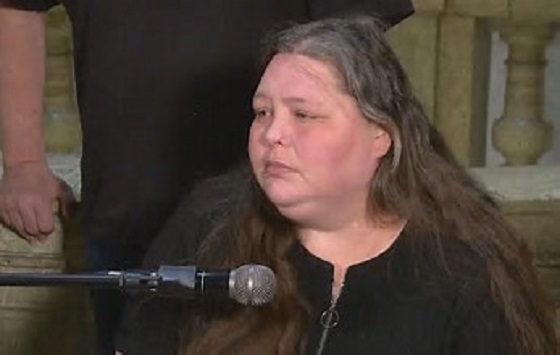
 Health2 days ago
Health2 days agoUS podcaster Glenn Beck extends a lifeline to a Saskatchewan woman waiting for MAiD
-

 Automotive1 day ago
Automotive1 day agoThe $50 Billion Question: EVs Never Delivered What Ottawa Promised
-

 Local Business22 hours ago
Local Business22 hours agoRed Deer Downtown Business Association to Wind Down Operations
-

 C2C Journal24 hours ago
C2C Journal24 hours agoWisdom of Our Elders: The Contempt for Memory in Canadian Indigenous Policy
-
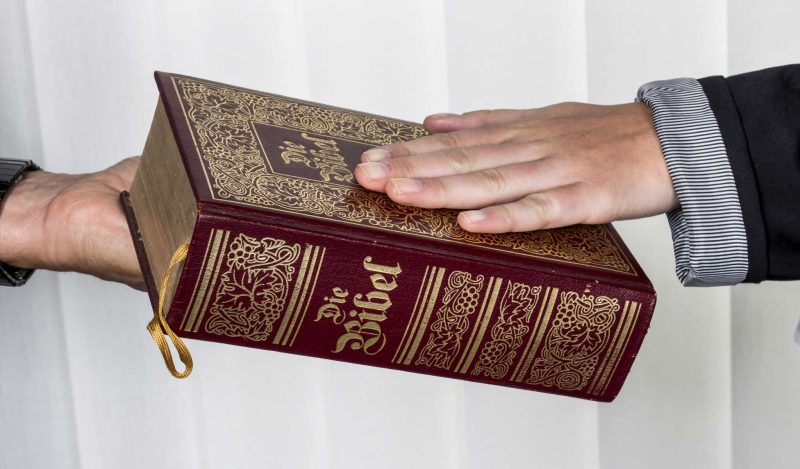
 Censorship Industrial Complex2 days ago
Censorship Industrial Complex2 days agoLiberals gain support for ‘hate speech’ bill targeting Bible passages against homosexuality
-

 International22 hours ago
International22 hours agoTrump admin wants to help Canadian woman rethink euthanasia, Glenn Beck says
-

 Business2 days ago
Business2 days agoStorm clouds of uncertainty as BC courts deal another blow to industry and investment
-
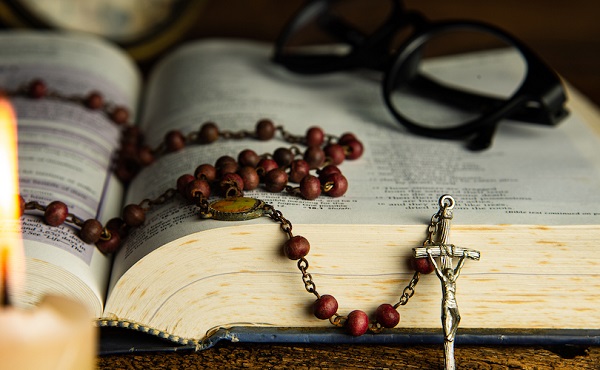
 Censorship Industrial Complex23 hours ago
Censorship Industrial Complex23 hours agoConservative MP calls on religious leaders to oppose Liberal plan to criminalize quoting Scripture


